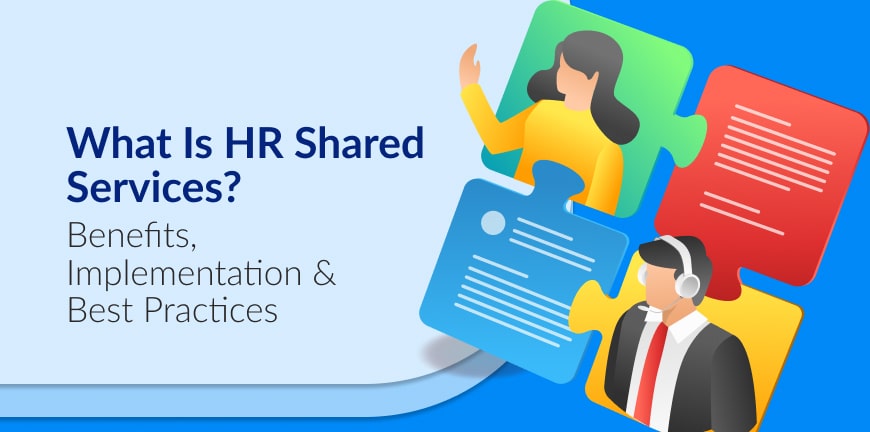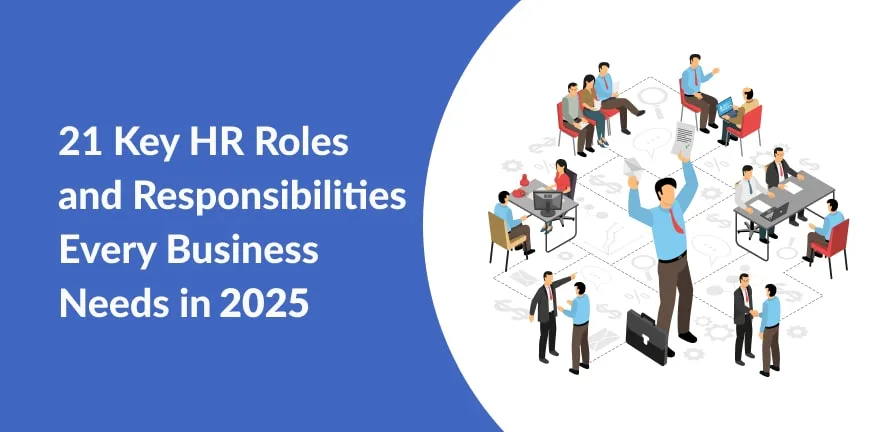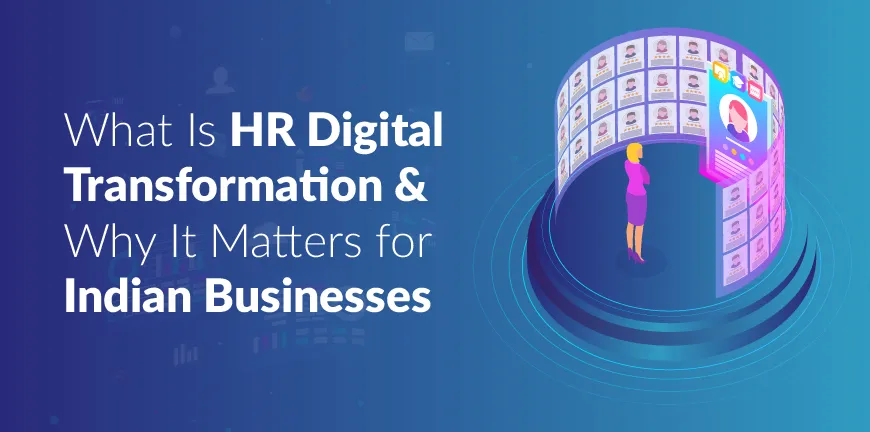
Top 10 Ways to Reduce Recruitment Costs in 2025
23/05/2025
What Is Industrial Licensing? Definition, Importance & Types
23/05/2025- Introduction
- What are HR Shared Services? Definition
- Key Functions Typically Included in HR Shared Services
- What are the Benefits of HR Shared Services?
- How HR Shared Services Work?
- Steps to Implement HR Shared Services
- Best Practices for Effective HR Shared Services
- Challenges and Considerations of HR Shared Services
- Are you looking for a Recruitment Partner?
- Frequently Asked Questions (FAQs)
Introduction
HR shared services facilitate the delivery of services by HR departments to employees more effectively and efficiently. The aim here is to compartmentalize the operational part of HR services and the strategic part of it to ensure both parts of the department are run in the most efficient way possible, resulting in an enhanced employee experience. In this article, we’ll be seeing what HR services are, their benefits, challenges, and best practices.
What are HR Shared Services? Definition
HR shared services refer to a centralized hub of HR services that includes the administrative and operational duties of HR. They provide services and support to other departments and employees through a combination of technology, processes, and a team of HR professionals dedicated to supporting these departments. This model allows organizations to provide standard HR services most efficiently due to the standardization and centralization of HR services.
Key Functions Typically Included in HR Shared Services
The distinct functions that are included in HR Shared Services are-
- Payroll
- Benefits and leave administration
- Relocation services
- Reporting and analytics
- Employee data management
- Recruitment operations
The inclusion of the key functions of HR under HR shared services enables other parts of the HR departments to focus on strategic initiatives.
What are the Benefits of HR Shared Services?
HR shared services come with a myriad of benefits. Some of the key benefits of HR shared services are-
1. Allows HR to be more strategic
Since the HR responsibilities are divided, the other HR professionals find the time to focus on crafting strategic initiatives. This helps in measuring the HR’s performance based on the strategies they come up with that align its the success of the organization rather than their daily responsibilities. This move of the HR showcases their potential to be a true partner, focusing on people management and positive employee experience.
2. Compliance
HR related tasks and functions are handled in the same consistent manner, ensuring the organization stays compliant with rules and regulations. Compliance upkeep ensures a better employee experience and eliminates the risks of legal problems in the organization.
3. Enhanced operations
In HR shared services, administrative duties and processes are clearly defined, facilitating smooth operational activities. By streamlining processes and optimizing workflows, this can be achieved.
4. Enhanced employee experience
In HR shared services, employees have a single point of contact for all their issues and queries, which helps resolve the matter quickly, resulting in a better employee experience. Employees can easily navigate through the systems they use at their jobs to resolve issues.
5. Cost efficiency
HR shared services can help cut costs. For example, you need less experienced HR professionals to handle transactional HR services, which results in lower labour costs. What’s more, the efficiency achieved through streamlining and simplifying services also helps reduce costs.
How HR Shared Services Work?
HR shared services include various HR functions and activities like employee data management, payroll, recruitment, benefits, onboarding, and more. Instead of every HR department being responsible for its function, for example, payroll being taken care of by the payroll team in HR, a central unit handles all of the tasks.
The centralization of processes can help enforce standard procedures by utilizing technology to automate tasks throughout the organization, leading to better efficiency.
Employees will be given an ESS portal to access HR information and complete tasks without having to take it up with the HR team, reducing the burden on them while empowering them.
By ensuring the administrative tasks are taken care of, talented HR professionals can afford to spend time on coming up with strategic initiatives that can help manage the employees better.
Steps to Implement HR Shared Services
If you are looking to implement HR shared services in your organization, here is a detailed overview of how you can start-
1. Assess your organizational needs
It’s important to identify and assess your current HR services needs in your organization. You must ask yourself some of these questions: how are your HR activities structured currently, what challenges are you facing, where will you benefit most from making improvements, etc.
2. Define clear objectives
Are you looking to streamline your processes? Want to improve employee experience? These are some of the things you must know the answer to before HR shared services implementation. You must make sure to align the HR shared services initiative with your organization’s overall goals. Think of how HR can contribute to achieving strategic goals, such as cost reduction, increased operational efficiency, improved employee experience, or better compliance with regulations.
3. Develop a vision for HR shared services
Think about the operating model you want to have, the type of technology you are looking to incorporate, structure of the organization you are hoping for. Create a proper plan that includes communication strategies, timelines, and more.
4. Communicate with stakeholders
Your stakeholders must be in on the plan of implementation of HR shared services. Managers, employees, HR leaders, and everyone must know how you are planning to design the HR shared services. Make sure they understand the benefits and objectives of it. Additionally, address any concerns through open communication.
5. Change management plan
Create a change management plan to help employees understand this change. Provide them with the right training to help them ease into it and understand the process. Address the needs of the current HR team.
6. Continuous improvement and innovation
Encourage feedback about the implementation of HR shared services from stakeholders and users. Monitor what’s working and what’s not and make changes to the processes as required. Keep yourself updated about the latest trends and practices that can further improve your efficiency.
Best Practices for Effective HR Shared Services
The following are some of the HR Shared Services centre’s best practices
- A centralized hub to help employees easily access HR information and services, as well as their own to carry out common tasks
- Establish standard HR processes by using technology to ensurethe elimination of errors and better efficiency
- Use technology like automation and chatbots to enhance employee experience
- By tracking key performance indicators like employee satisfaction, cost-per-transaction identifying areas for improvement
- Encourage and gather feedback from stakeholders, users about the HR shared services model you have implemented
- Define clear expectations for delivery of services, time of response, and duration of response to ensure higher accountability
- The HR shared services must be user-friendly, accessible, to meet employee needs and demands
- Provide HR professionals with the right training to effectively deliver HR shared services
Challenges and Considerations of HR Shared Services
While HR shared services are very efficient, they do come with certain challenges and considerations.
Some of the disadvantages are
- Changing the current HR model and implementing the HR shared services model may not be well received by employees, management, or bot,h as they may fear losing a connection with HR
- HR shared services can only be implemented with the help of technology, and the processes may be quite complicated and require careful planning
- Organizations may not have the right knowledge to implement HR shared services effectively, meaning they may either go wrong with the design, implementation, or management of it
- Investing in the technology, training of HR shared services may seem costly initially.
- This process of standardisation may not work for all regions due to the change in compliance requirements in those regions
Considerations
- A proper change management plan must be in place to ensure everyone is onboard with the HR shared services implementation
- You must invest well if you want an HR technology that integrates well with your internal systems
- The HR shared services operating model must be flexible to adapt to changing conditions in the business
- Leverage HR data and analytics to track performance, identify areas for improvement, and make data-driven decisions.
Are you looking for a Recruitment Partner?
Before investing in HR shared services, leaders must consider the challenges and pre-emptively take action to overcome them. Investments in HR shared services are long-term investments. If you are looking for a recruitment partner to help implement HR shared services in your organization, we can help. Alp Consulting, being one of the most experienced HR firms in the country, knows how to help you find the right solution.
Frequently Asked Questions (FAQs)
1. What are HR shared services?
HR shared services refer to a centralized hub of HR services that includes the administrative and operational duties of HR. They provide services and support other departments and employees through a combination of technology, processes, and a team of HR professionals dedicated to supporting these departments.
2. How do HR shared services benefit an organization?
An HR shared services model can improve employee experiences through clearer communication and increased collaboration among employees and departments, streamlined work processes, shared applications, and new business opportunities that can lead to promotions.
3. What technology supports HR shared services?
HRIS, chatbots, data analytics tools, and automation tools are a few of the technologies that are used to implement HR shared services.
4. What is the definition of HR shared services?
The definition of HR shared services is the centralization and standardization of HR processes and tasks to ensure effective delivery of services by HR to other departments and employees in an organization.
5. How do HR shared services reduce costs?
HR shared services can help cut costs in many ways, but especially in the administrative aspect. For example, you need less experienced HR professionals to handle transactional HR services, which results in lower labour costs. What’s more, the efficiency achieved through streamlining and simplifying services also helps reduce costs.
6. How is HR shared services different from HR outsourcing?
Shared services refer to the internal support a business implements to keep operations and systems running smoothly and accessible to all stakeholders. Outsourcing, on the other hand, is external support that offers deep expertise to handle core operations on behalf of the business.
Contact Us For Business Enquiry

Hariharan Iyer
Hariharan Iyer is the Vice President – Operations at ALP Consulting, bringing over 40+ years of experience in HR outsourcing and labour law compliance. He leads end-to-end HRO operations, ensuring process efficiency, statutory compliance, and seamless service delivery for clients across industries. With a strong background in labour law governance and workforce management, Hariharan plays a key role in driving operational excellence and compliance-led HR solutions at ALP Consulting.




